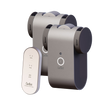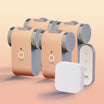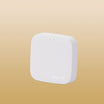With the advent of the 5G era, the Internet of Things has developed rapidly and has become increasingly closely related to daily life. The Internet of Things, as small as you get express delivery from smart cabinets, ride a shared bicycle, and can view smart door locks, cameras, and cat-eye doorbells through mobile APP; and as large as the smart city and the interconnection of everything that people often hear, is an essential embodiment of the development of the Internet of Things technology.
The number and reach of the Internet of Things are expanding rapidly. According to the study, the number of Internet of Things connections in 2020 exceeded that of non-Internet of Things online connections for the first time.
What is the Internet of Things
The Internet of Things (IoT) concept was first proposed in 1999. Officially interpreted as the "Internet-connected by everything," it is a vast network formed by extending and expanding based on the Internet and combining various information-sensing devices and networks. It can realize the interconnection of people, computers, and objects at any time and place. It was once called the third wave of the development of the world information industry after computers and the Internet.
We can see that the Internet of Things has the following characteristics: people and things connected, things and things connected, information, remote management and control, and intelligent. What are the standard wireless networking technologies in the Internet of Things?
In the process of IoT popularization, wireless technology plays a more and more critical role. Beginner, Xiaoxing introduces several standard wireless IoT technologies, their characteristics, and application scenarios.
1. Wi-Fi
Wi-Fi is a wireless LAN technology based on the IEEE 802.11 standard, a typical example of wireless transmission technology in the current home network, and a standard for home gateways, routers, mobile phones, computers, and other electronic communication equipment. The new generation of Wi-Fi 6 technology, with large bandwidth, low latency, and broad access characteristics, can provide a better network experience.
2. Bluetooth
Bluetooth is an open global specification for wireless data and voice communications. It uses a 2.4-2.485GHz ISM band to communicate with each other based on a low-cost, short-range wireless connection. Many first thought of Bluetooth headsets, mice, keyboards, and other daily electronic products using Bluetooth technology Internet of Things devices.
3. ZigBee
Zigbee is a short-range, low-power wireless communication technology based on the IEEE802.15.4 standard, suitable for periodic, intermittent, and repeatable low-delay data transmission, supporting 868 MHz, 915 MHz, and 2.4 GHz ISM bands. Zigbee derives its name from the honeybee ballet, in which the bee forms a communication network within a colony by "dancing" its partners to convey the location of pollen through flight and the "buzzing" of its wings.
4. NFC
Near-field communication (NFC) technology is a short-range high-frequency radio technology developed in combination with wireless interconnection technology based on Radio Frequency Identification (RFID) technology that enables two electronic devices to communicate quickly within a few centimeters.
NFC is mainly used in smartphones, smart watches, bracelets, and other mobile devices, especially in electronic payment. In addition to swiping metro cards, bus cards, access cards, and so on, NFC is also used by major mobile phone manufacturers as a payment portal to form various "Pay."
5. LoRa
Long Range Radio (LoRa) technology is one of the mainstream technologies of the Low-Power Wide-Area Network (LPWAN), operating on global free frequencies such as 433/868/915 MHz (i.e., unauthorized).
Lora is widely deployed in smart communities, smart homes and buildings, smart agriculture, smart logistics, and other vertical industries with broad prospects due to its low power consumption, long transmission distance, flexible networking, and many other characteristics, which are in line with the fragmented, low-cost and large connectivity needs of the Internet of Things.
6. NB-IoT
Narrow Band Internet of Things (NB-IoT) technology is based on FDD LTE technology, supports cellular data connectivity of low-power devices over wide area networks, and is one of the hot low-power wide area networks (LPWans).





















Leave a comment
All comments are moderated before being published.
This site is protected by reCAPTCHA and the Google Privacy Policy and Terms of Service apply.